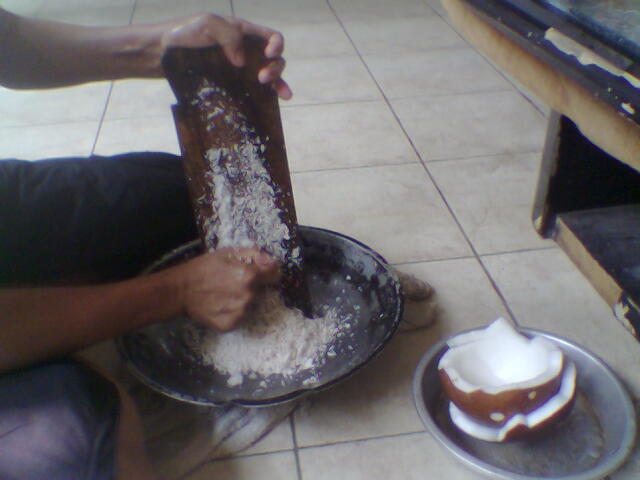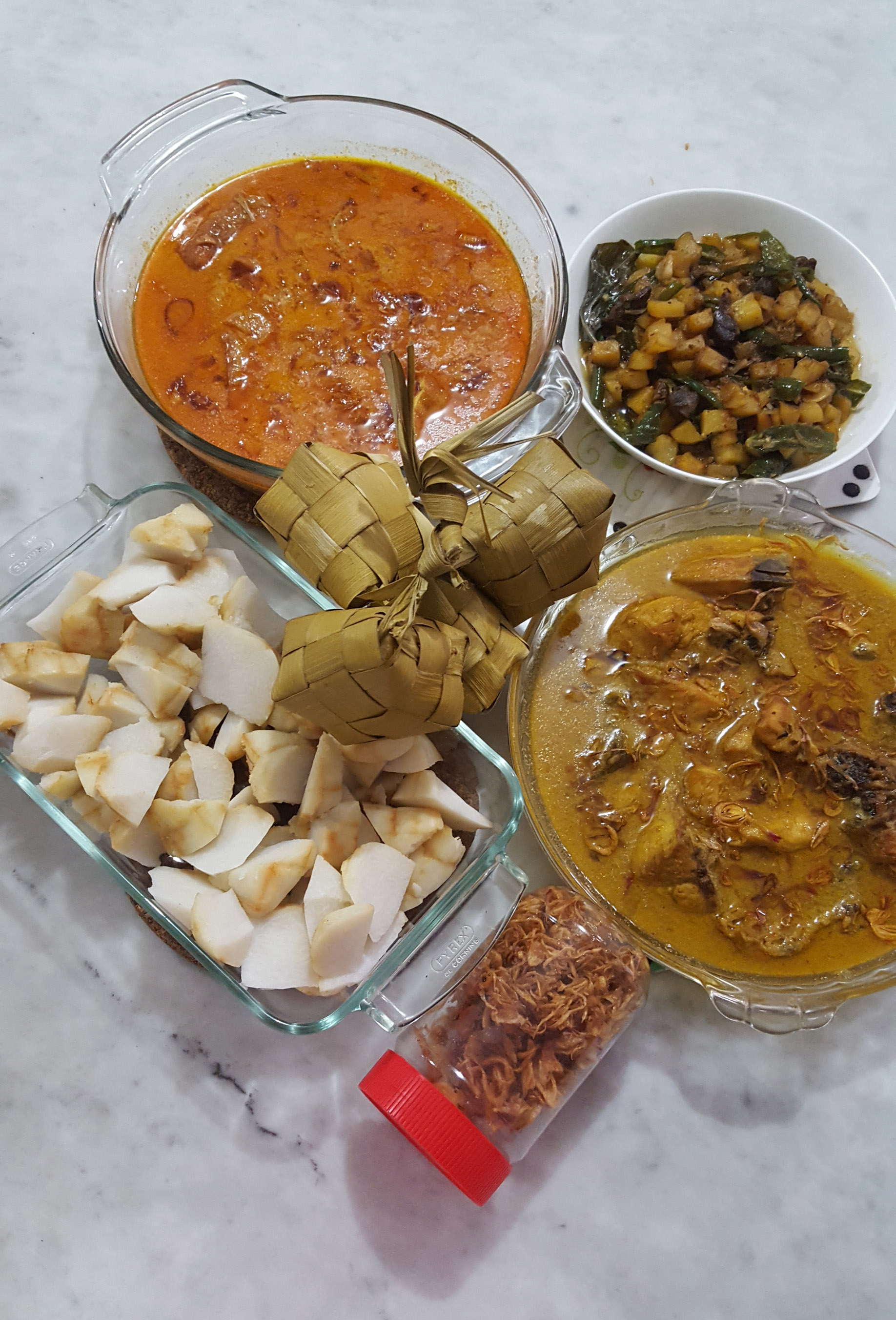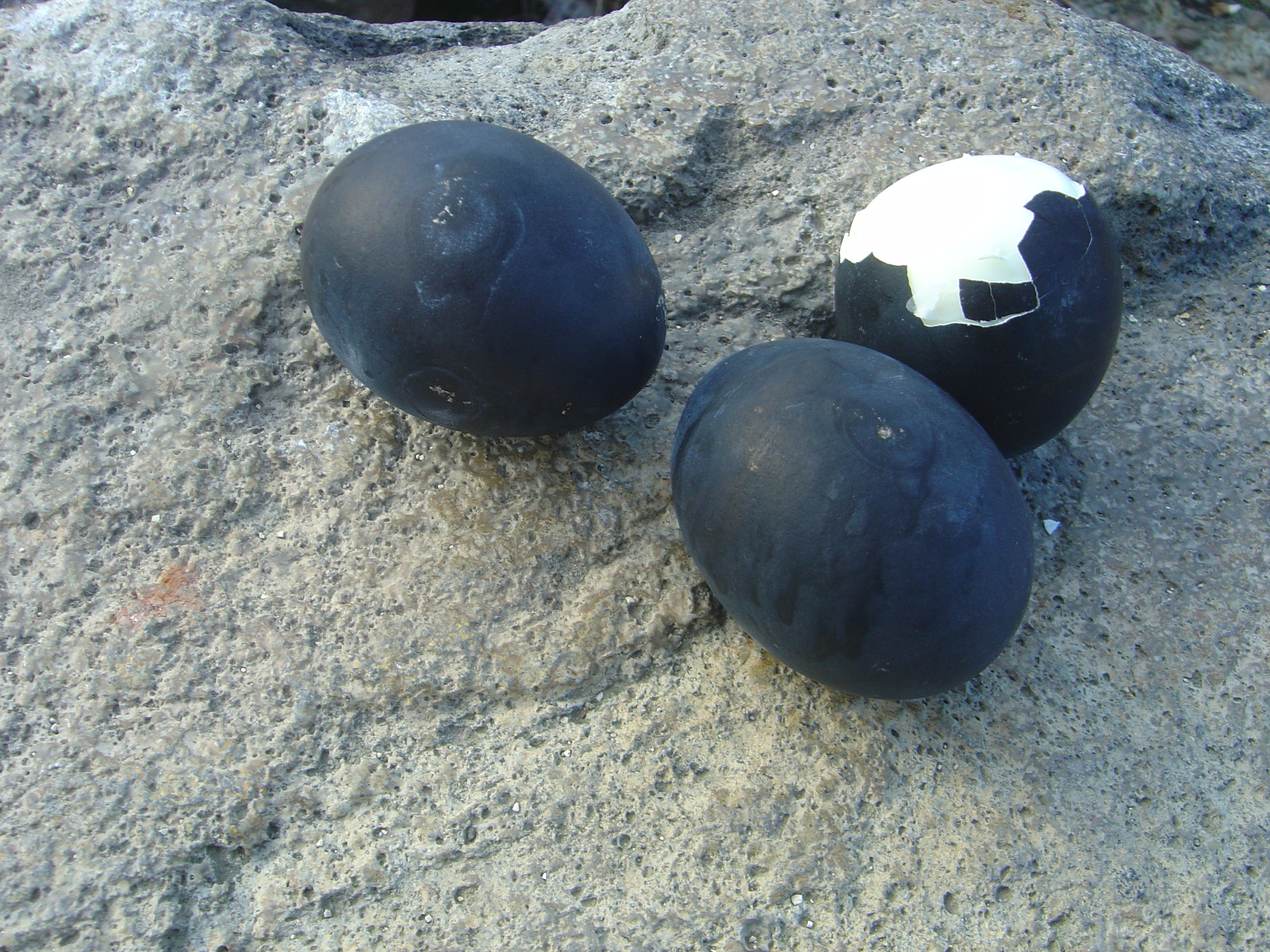|
Burasa
''Burasa'' () (also ''burasa, ''burasak'' or ''buras'') is an Indonesian rice dumpling, cooked with coconut milk packed inside a banana leaf pouch. It is similar to ''lontong'', but with a richer flavour acquired from the coconut milk. It is a delicacy of the Bugis and Makassar people of South Sulawesi. It is also a dish associated with the Bugis diaspora, notably in the Malaysian states of Johor, Selangor, Sabah, and Sarawak where there are large established communities. It is often consumed as a staple to replace steamed rice or ''ketupat'', and a popular accompaniment to a rich dish of chicken braised with galangal (''ayam masak lengkuas'' in Malay language, Malay, ''likku'' or ''lekku'' in Buginese language, Buginese). ''Burasa'' is made by steaming the rice until half-cooked, then cooking further in coconut milk Coconut milk is a plant milk extracted from the grated pulp of mature coconuts. The opacity and rich taste of the milky-white liquid are due to its high oil ... [...More Info...] [...Related Items...] OR: [Wikipedia] [Google] [Baidu] |
Bugis
The Bugis people, also known as Buginese, are an Austronesian ethnic groupthe most numerous of the three major linguistic and ethnic groups of South Sulawesi (the others being Makassarese and Torajan), in the south-western province of Sulawesi, third-largest island of Indonesia. The Bugis in 1605 converted to Islam from Animism. Although the majority of Bugis are Muslim, a small minority adhere to Christianity as well as a pre-Islamic indigenous belief called ''Tolotang''. The Bugis, whose population numbers around six million and constitutes less than 2.5% of the Indonesian population, are influential in the politics in the country; and historically influential on the Malay Peninsula, Sumatra, Borneo, Lesser Sunda Islands and other parts of the archipelago where they have migrated en masse, starting in the late seventeenth century. The third president of Indonesia, B. J. Habibie, and a former vice president of Indonesia, Jusuf Kalla, are Bugis descent. In Malaysia, the ... [...More Info...] [...Related Items...] OR: [Wikipedia] [Google] [Baidu] |
Serundeng
Serundeng () refers to a Javanese spiced grated coconut side dish or condiment originated in Indonesia that is used to accompany rice. Serundeng may taste sweet or hot and spicy, according to the recipe variants. Its best-known variant is an Indonesian preparation of sautéed grated coconut mixed with spice and other ingredients. The spiced shredded toasted coconut can be mixed with peanuts, used as a condiment to add flavour, or used as a garnish sprinkled upon rice-based dishes, such as steamed rice, lontong, ketan sticky rice, and burasa; or upon traditional soto soups. Serundeng can also be considered a separate dish if mixed with main ingredients, such as ''serundeng daging'', which is fried meat, usually beef, served in this serundeng spiced coconut floss. Ingredients Grated coconut flesh forms an essential part of serundeng in Indonesian cuisine. Freshly shredded coconut, instead of grated coconut left over from making coconut milk, gives a richer taste. The coco ... [...More Info...] [...Related Items...] OR: [Wikipedia] [Google] [Baidu] |
Indonesian Cuisine
Indonesian cuisine is a collection of various regional culinary traditions by various ethnic groups that formed in the archipelagic nation of Indonesia. There are a wide variety of recipes and cuisines in part because Indonesia is composed of approximately 6,000 populated List of islands of Indonesia, islands of the total 17,508 in the world's largest archipelago,"Indonesian Cuisine." . Accessed July 2011. Tradition and characteristics Indonesia has around 5,350 traditional recipes, with 30 of them ...[...More Info...] [...Related Items...] OR: [Wikipedia] [Google] [Baidu] |
Malaysian Cuisine
Malaysian cuisine (Malay language, Malay: ''Masakan Malaysia''; Jawi script, Jawi: ) consists of cooking traditions and practices found in Malaysia, and reflects the multi-ethnic makeup of its population. The vast majority of Malaysia's population can roughly be divided among three major ethnic groups: Ethnic Malays, Malays, Chinese Malaysian, Chinese and Indian Malaysian, Indians. The remainder consists of the Dayak people, indigenous peoples of Sabah and Sarawak in East Malaysia, the Orang Asli of Peninsular Malaysia, the Peranakan and Eurasian creole communities, as well as a significant number of foreign workers and expatriates. As a result of historical migrations, colonisation by foreign powers, and its geographical position within its wider home region, Malaysia's culinary style in the present day is primarily a melange of traditions from its Malay, Chinese, Indian, Indonesian cuisine, Indonesian, Thai, Filipino cuisine, Filipino and indigenous Bornean and Orang Asli, w ... [...More Info...] [...Related Items...] OR: [Wikipedia] [Google] [Baidu] |
Pallubasa
Pallubasa or Pallu basa is a traditional dish from Makassar, South Sulawesi, Indonesia. It is similar to coto Makassar; however, while both are primarily made from offal and/or meat of cattle Cattle (''Bos taurus'') are large, domesticated, bovid ungulates widely kept as livestock. They are prominent modern members of the subfamily Bovinae and the most widespread species of the genus '' Bos''. Mature female cattle are calle ... or buffalo, the meat for pallubasa is cooked longer, and served with a creamy santan and sautéed grated coconut broth in a bowl. Pallubasa may be served with a raw egg (or ''alas'') to make the broth even creamier, and lime juice to add zest to the broth. Unlike coto Makassar, which is eaten with ketupat, pallubasa is eaten with a plate of white rice. It was also eaten with burasa in the past. Historically, pallubasa contained only offal and/or other unwanted parts of the animal (such as its testicles, intestines, udders, and even its dr ... [...More Info...] [...Related Items...] OR: [Wikipedia] [Google] [Baidu] |
Konro
Konro is an Indonesian rib soup originating with the Makassarese people of South Sulawesi. Usually this soup was made with ribs, such as spareribs or beef as main ingredient. The soup is brown-black in color and eaten either with burasa or ketupat cut into bite-size pieces or rice. The spicy and strong-tasting soup is made from a mixture of rich spices, which includes coriander, ''keluwak'' ('' Pangium edule''); a fruit that gives it its blackish color, also small amount of nutmeg, turmeric, galangal, cinnamon, tamarind, lemongrass, clove, and ''salam'' (Indonesian bayleaf). Variants Originally konro was usually served as a spicy rich soup, however today the new variation of dry konro is available, the ''konro bakar'' (grilled konro), grilled ribs marinated and coated in spices typical to the konro soup. See also * List of Indonesian soups This is a list of Indonesian soups. Indonesian cuisine is diverse, in part because Indonesia is composed of approximately 6,000 populat ... [...More Info...] [...Related Items...] OR: [Wikipedia] [Google] [Baidu] |
Johor
Johor, also spelled Johore,'' is a States and federal territories of Malaysia, state of Malaysia in the south of the Malay Peninsula. It borders with Pahang, Malacca and Negeri Sembilan to the north. Johor has maritime borders with Singapore to the south and Indonesia to the east and west. As of 2023, the state's population is 4.09 million, making it the second most populous state in Malaysia, after Selangor. Johor Bahru is the capital city and the economic centre of the state, Kota Iskandar is the state administrative centre and Muar (town), Muar serves as the royal capital. As one of the nation's most important economic powerhouses, Johor has the highest gross domestic product (GDP) in Malaysia outside of the Klang Valley, making it the country's List of Malaysian states by GDP, second largest state economy, behind Selangor. It also has the List of Malaysian states by household income, second highest household income among all states in Malaysia. Johor is a major manufacturi ... [...More Info...] [...Related Items...] OR: [Wikipedia] [Google] [Baidu] |
Buginese Language
Buginese or Bugis (Buginese: ) is a language spoken by about 4 million people mainly in the southern part of Sulawesi, Indonesia. History The word Buginese derives from the word ''Bugis'' in Malay. In Buginese, it is called while the Bugis people are called . According to a Buginese myth, the term is derived from the name to the first king of Cina, an ancient Bugis kingdom, . basically means 'the followers of La Sattumpugi'. Little is known about the early history of this language due to the lack of written records. The earliest written record of this language is Sureq Galigo, the epic creation myth of the Bugis people. Another written source of Buginese is Lontara, a term which refers to the traditional script and historical record as well. The earliest historical record of Lontara dates to around the 17th century. Lontara records have been described by historians of Indonesia as "sober" and "factual" when compared to their counterparts from other regions of Maritime S ... [...More Info...] [...Related Items...] OR: [Wikipedia] [Google] [Baidu] |
Daun Salam
''Syzygium polyanthum'', with common names Indonesian bay leaf or daun salam, is a species of plant in the family Myrtaceae, native to Indonesia, Indochina and Malaysia. The leaves of the plant are traditionally used as a food flavouring, and have been shown to kill the spores of ''Bacillus cereus''. Description The tree grows from lower to higher elevation up to 1400 meters. The tree can grow up to 25 meters of height. The leaf gives slightly bitter taste with astringent effect. Uses The leaves may be used dried or fresh in the cuisine of Sumatra, Java, Madura, or Bali. It is an ingredient in dishes such as ''sayur lodeh'' and '' nasi gurih''. In Suriname Suriname, officially the Republic of Suriname, is a country in northern South America, also considered as part of the Caribbean and the West Indies. It is a developing country with a Human Development Index, high level of human development; i ... it is known as 'salam blad' and widely used in Javanese cuisine, mainl ... [...More Info...] [...Related Items...] OR: [Wikipedia] [Google] [Baidu] |
Bay Leaf
The bay leaf is an aromatic leaf commonly used as a herb in cooking. It can be used whole, either dried or fresh, in which case it is removed from the dish before consumption, or less commonly used in ground form. The flavour that a bay leaf imparts to a dish has not been universally agreed upon, but many agree it is a subtle addition. Bay leaves come from various plants and are used for their distinctive flavour and fragrance. The most common source is the bay laurel ('' Laurus nobilis''). Other types include California bay laurel, Indian bay leaf, West Indian bay laurel, and Mexican bay laurel. Bay leaves contain essential oils, such as eucalyptol, terpenes, and methyleugenol, which contribute to their taste and aroma. Bay leaves are used in cuisines including Indian, Filipino, European, and Caribbean. They are typically used in soups, stews, meat, seafood, and vegetable dishes. The leaves should be removed from the cooked food before eating as they can be abrasi ... [...More Info...] [...Related Items...] OR: [Wikipedia] [Google] [Baidu] |
Hard-boiled Egg
Boiled eggs are typically from a chicken, and are cooked with their shells unbroken, usually by immersion in boiling water. Hard-boiled or hard-cooked eggs are cooked so that the egg white and egg yolk both solidify, while soft-boiled eggs may leave the yolk, and sometimes the white, at least partially liquid and raw. Boiled eggs are a popular breakfast food around the world. Besides a boiling water immersion, there are a few different methods to make boiled eggs. Eggs can also be cooked below the boiling temperature, i.e. coddling, or they can be steamed. The egg timer was named for commonly being used to time the boiling of eggs. History Eggs have a long history of use as a food source, following the history of the domestic Chicken, and recipes that include boiled eggs have been recorded since the first known cookbook, ''De re coquinaria'', in which at least one recipe calls for the use of preserved boiled eggs. Alexander Pope is recorded as having recommended the method o ... [...More Info...] [...Related Items...] OR: [Wikipedia] [Google] [Baidu] |
Salt
In common usage, salt is a mineral composed primarily of sodium chloride (NaCl). When used in food, especially in granulated form, it is more formally called table salt. In the form of a natural crystalline mineral, salt is also known as rock salt or halite. Salt is essential for life in general (being the source of the essential dietary minerals sodium and chlorine), and saltiness is one of the basic human tastes. Salt is one of the oldest and most ubiquitous food seasonings, and is known to uniformly improve the taste perception of food. Salting, brining, and pickling are ancient and important methods of food preservation. Some of the earliest evidence of salt processing dates to around 6000 BC, when people living in the area of present-day Romania boiled spring water to extract salts; a salt works in China dates to approximately the same period. Salt was prized by the ancient Hebrews, Greeks, Romans, Byzantines, Hittites, Egyptians, and Indians. Salt became a ... [...More Info...] [...Related Items...] OR: [Wikipedia] [Google] [Baidu] |




